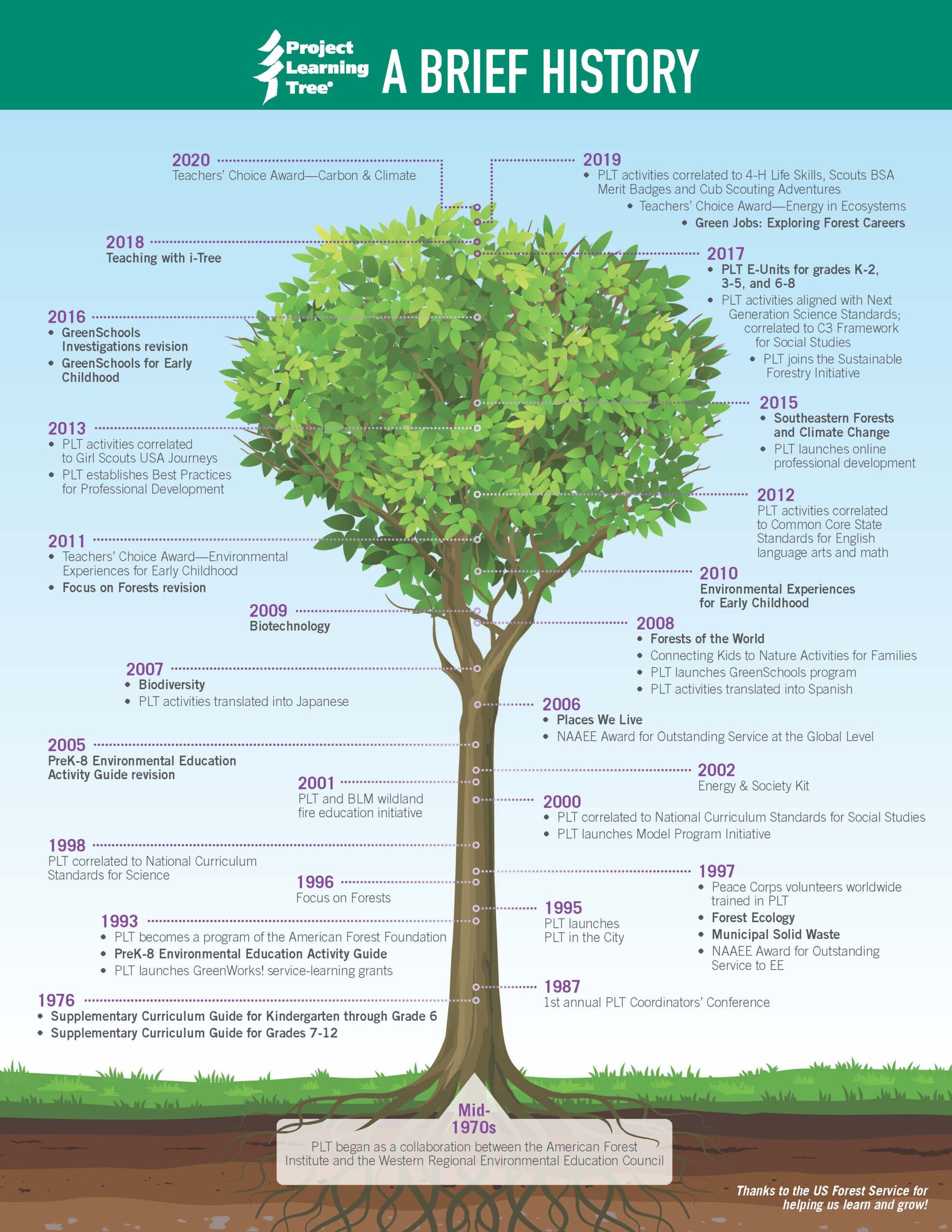By Mikayla Manthiram
Young children and teenagers today are growing up amid looming, existential threats, not least of which is a changing climate. Catastrophic wildfire, drought, and extreme weather events, all exacerbated by climate change, have created a generation of climate conscious young people. Project Learning Tree (PLT) is a program for these students. It helps them learn how to think critically, not what to think about complex environmental issues, like what the forest carbon cycle looks like, how recycling works, and the dangers of invasive species and pollution.
 PLT began in the 1970s as a collaboration between the American Forest Institute and the Western Regional Environmental Educational Council. In 1993, PLT became a program of the American Forest Foundation (AFF), and shortly after in 1998, the PLT curriculum was dovetailed with the National Curriculum Standards for Science. In 2017, the PLT program landed with the Sustainable Forestry Initiative (SFI), which in 2018, integrated PLT with i-Tree, a series of desktop and web-based applications that host scores of USDA Forest Service research and development data. iTree provides managers, advocates, and students with tools to quantify the value of community trees and forests at multiple scales and in different terms, like pollution mitigation, storm water run-off reduction, and carbon sequestration and storage. Today, PLT is one of the most widely used preK-12 environmental education programs in the United States and abroad, and has reached 138 million students through 765,000 PLT trained educators.
PLT began in the 1970s as a collaboration between the American Forest Institute and the Western Regional Environmental Educational Council. In 1993, PLT became a program of the American Forest Foundation (AFF), and shortly after in 1998, the PLT curriculum was dovetailed with the National Curriculum Standards for Science. In 2017, the PLT program landed with the Sustainable Forestry Initiative (SFI), which in 2018, integrated PLT with i-Tree, a series of desktop and web-based applications that host scores of USDA Forest Service research and development data. iTree provides managers, advocates, and students with tools to quantify the value of community trees and forests at multiple scales and in different terms, like pollution mitigation, storm water run-off reduction, and carbon sequestration and storage. Today, PLT is one of the most widely used preK-12 environmental education programs in the United States and abroad, and has reached 138 million students through 765,000 PLT trained educators.
PLT programs are directed and implemented locally. This means PLT educators receive state-specific supplements that speak to their locale’s professional development, school districts’, and/or educators’ individual needs. PLT.org has helpful resources for students, families, and teachers like Nature Activities for Families that can be used to explore local green spaces, and the Green Job and Personality Quiz, which matches students to natural resource careers that suit their personality. Teachers can also use the website to access curriculum resources and GreenWorks! Grants, up to $1,000 each, for environmental service-learning projects that link classroom learning to the real world. Since 1992, these grants have helped students implement action projects that they helped design to green their school or to improve an aspect of their neighborhood’s environment.
Different states have been able to implement PLT in many unique ways. For example, for its NASF #CentennialChallenge, the West Virginia Division of Forestry collaborated with PLT to help train 100+ educators in ways to bring forestry into the classroom. Across the border in Virginia, the Country Day School became the first early childhood center in the country to be named a certified PLT GreenSchool. You can find out more about how to implement PLT curriculum and forest learning in your state by clicking here.
Want to reach out to the author? Email intern@stateforesters.org.

